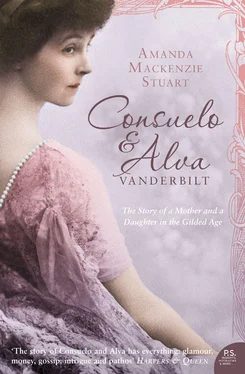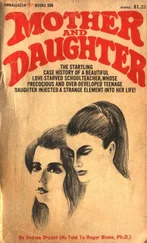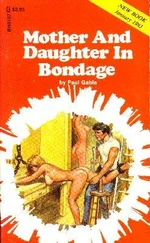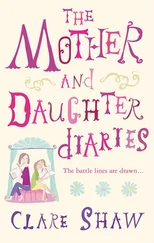There was no shortage of partners for a seventeen-year-old American heiress, however, and by the end of June, Consuelo had received five proposals of marriage. ‘When I say I had, I mean that my mother informed me that five men had asked her for my hand … She had, as a matter of course, refused them, since she considered none of them sufficiently exalted.’ 46 Consuelo was only allowed to consider one: Prince Francis Joseph, a German prince who was the youngest of the four Battenberg princes, and at the centre of an intrigue to elect him ruler of Bulgaria. Confronted with the prospect of a royal crown rather than an English ducal coronet, Alva seems momentarily to have wavered from her original plan and Prince Francis Joseph was allowed to present his case to Consuelo. She was horrified both by the idea and by the Prince to whom she developed an immediate aversion. Alva too had second thoughts, unsure whether the intrigue would succeed. Nothing more was heard from her on the subject, though news of this potential engagement eventually reached Town Topics in New York who asserted (correctly this time) that: ‘There is a general feeling that the report is not based upon facts, at this time at least.’ 47
In June, Alva took Consuelo to England. ‘[Alva] did not let her dally long in the drawing-rooms of Paris,’ wrote Elisabeth de Gramont. ‘She intended [Consuelo] for the English aristocracy, which she deemed more advantageous.’ 48 Here Alva rented a house at Danesfield near Marlow and asked her old friend Mrs William Jay and her daughters to join them. The weather was so cold that they only went to Danesfield at the weekends and spent the rest of the time in the warmth of a London hotel. Consuelo described it as ‘frowsty in the true English sense’, 49 and thought with longing of their lovely hotel in Paris beside the Tuileries Gardens.
In England, Alva made use of her networks. The two people whose help she enlisted in the summer of 1894 were Consuelo Yznaga, now Duchess of Manchester, and Minnie Stevens, now Mrs Paget – pre-eminent figures in English society, favourites of the Prince of Wales and leading lights of his circle known as the Marlborough House Set. Consuelo did not care for Minnie Paget (later Lady Paget) one jot, however. ‘Lady Paget was considered handsome; to me, with her quick wit and worldly standards, she was Becky Sharp incarnate … Once greetings had been exchanged I realised with a sense of acute discomfort that I was being critically appraised by a pair of hard green eyes.’ 50
Such scrutiny was all too familiar. In an age when young women were commodities on the marriage market, they were forced to become accustomed to such analysis, which is not to say they enjoyed it. * ‘I was particularly sensitive about my nose, for it had an upward curve which my mother and her friends discussed with complete disregard for my feelings,’ wrote Consuelo. ‘Since nothing could be done to guide its misguided progress, there seemed to be no point in stressing my misfortune.’ 51 In London, Minnie Paget expressed her views forcefully. ‘The simple dress I was wearing, my shyness and diffidence, which in France were regarded as natural in a debutante, appeared to awaken her ridicule. “If I am to bring her out,” she told my mother, “she must be able to compete at least as far as clothes are concerned with far better-looking girls” … It was useless to demur that I was only seventeen. Tulle must give way to satin, the baby décolletage to a more generous display of neck and arms, naiveté to sophistication. Lady Paget was adamant.’ 52
Minnie Paget was once described by Town Topics as having ‘watchful eyes ever on someone with money to burn’, 53 and was rumoured to accept a fee for this kind of help. Having made over Consuelo to her satisfaction she arranged a dinner party to which she invited the young Duke of Marlborough. By now Alva’s plan was becoming clear, even to her daughter. Minnie Paget placed the Duke to her right with Consuelo on his other side – ‘a rather unnecessary public avowal of her intentions’ Consuelo thought afterwards. ‘He seemed to me very young, although six years my senior, and I thought him good-looking and intelligent. He had a small aristocratic face with a large nose and rather prominent blue eyes. His hands, which he used in a fastidious manner, were well shaped and he seemed inordinately proud of them.’ 54
They only met once during Consuelo’s visit to England, and it seemed at the time that nothing would come of the matter, to Consuelo’s great relief. Behind her back, however, English tongues were already wagging. Mrs Paget (later described by George Cornwallis-West as the worst gossip in London) was unable to keep quiet about the plan. On 19 July, the Duke’s grandmother, Frances, Duchess of Marlborough, wrote to her daughter-in-law Lady Randolph Churchill that she was ‘amazed at the news … [of] Marlborough’s marriage. Mrs Paget has been very busy introducing him to Miss Vanderbilt and telling everybody she meant to arrange a marriage between them, but he has only met her once and does not seem to incline to pursue the acquaintance.’ 55
One reason that the introduction may have stalled was that the American press had finally picked up the scent of the Vanderbilts’ separation. By 1894, the dark side of the Faustian bargain between the press and newer members of high society was all too obvious: socialites who had courted publicity now found themselves the captives of its machinery. It had become big business too. By the early 1880s most newspapers in New York responded to demand and carried social columns, while magazines devoted entirely to society matters began to appear. Both were aimed at two audiences. The first was a wider readership well outside the social elite, and included those who simply enjoyed society sagas as entertainment, nosey servants and those who worked in society’s service industries for whom information was power, such as Mrs Heeney in Edith Wharton’s The Custom of The Country (the ‘society’ manicurist and masseuse whose alligator bag was always filled with newspaper clippings). The second audience was high society itself and those who aspired to it. Here, the position of its members was reinforced and legitimised by constantly seeing their names, clothes and parties in print. ‘If one’s social goal was to force an entry into the most exclusive circles, half the satisfaction of achievement would have been lost if one’s erstwhile acquaintances had not been able to read all about it,’ 56 writes Ruth Brandon.
In some cases, newspaper editors were society figures in their own right, like James Gordon Bennett Jr of the New York Herald , or the society columnist George Wetherspoon who wrote for The New York Times. Though the social elite sometimes claimed to be irritated by comment in such publications, it generally remained on the right side of intrusive. Oddly, the two publications where it was most important to be ‘seen’ were the two which explicitly held the Four Hundred in the greatest contempt. One was the New York World after 1883, when it was bought by Joseph Pulitzer, who combined formidable liberal campaigning with a keen sense of the aspirations of his poorer female readership, and reconciled the two by covering the activities of high society in sensational and barbed detail while stopping just short of pouring unmitigated scorn. The other key publication was Town Topics, which changed the whole nature of society journalism after it was purchased by the piratical Colonel D’Alton Mann in 1891. When he took over ownership of the magazine that year he wrote: ‘The 400 of New York is an element so absolutely shallow and unhealthy that it deserves to be derided almost incessantly’ 57 – an editorial philosophy he pursued with great ebullience until a court case in 1905 exposed the seamier side of his methods. Colonel Mann paid for stories from a wide network of clubmen and other members of society down on their luck for his information, as well as servants and suppliers, which then became part of his weekly ‘Saunterings’ column. As a weekly magazine, Town Topics harassed society’s elite week in, week out using a well-placed network of spies so that long-running plot lines emerged for the initiated, which often turned out to be accurate because his informants were so close to the heart of society. Colonel Mann was known to accept money from society figures in return for pulling unflattering stories; and it would later emerge that he had a group of eminent ‘immunes’ whom he blackmailed into handing over large sums of money in exchange for soft treatment.
Читать дальше












